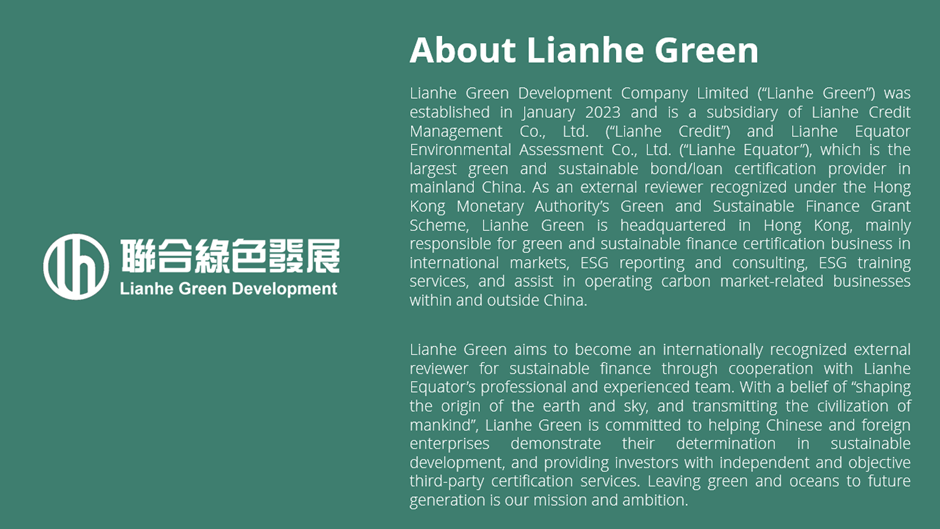 return
return
 current location:Home
current location:Home
 News and Events
News and Events
 News and Events
News and Events
 【ESG News】Global Trends Biweekly Newsletter Issue 46 (2025.11.3-2025.11.16)
【ESG News】Global Trends Biweekly Newsletter Issue 46 (2025.11.3-2025.11.16)
 return
return
 current location:Home
current location:Home
 News and Events
News and Events
 News and Events
News and Events
 【ESG News】Global Trends Biweekly Newsletter Issue 46 (2025.11.3-2025.11.16)
【ESG News】Global Trends Biweekly Newsletter Issue 46 (2025.11.3-2025.11.16)
category:News and EventsRelease time:2025-11-17

Hong Kong ESG trends
HKSAR Government’s Third Digital Green Bonds Offering
The Government of the Hong Kong Special Administrative Region of the People’s Republic of China (the HKSAR Government) today (11 November) announced the successful pricing of around HK$10 billion worth of digital green bonds (Digital Green Bonds) denominated in HK dollars (HKD), Renminbi (RMB), US dollars (USD) and euro (EUR) under the Government Sustainable Bond Programme.
The latest issuance marks another milestone on the HKSAR Government’s bond tokenisation journey, following the two successful issuances in 2023 and 2024. While retaining the key innovative features of the previous issuance, including issuing in a digitally native format, providing the option of investor access via traditional market infrastructure, and integrating green bond disclosures with the digital assets platform, the latest issuance has also introduced innovative features and achieved breakthroughs in the following areas:
Source: Hong Kong Monetary Authority - HKSAR Government’s Third Digital Green Bonds Offering
Lianhe Green Insights
Hong Kong’s latest issuance uses practice as a brush to outline the blueprint for the future digital finance ecosystem. It lays the foundation for the integration of other forms of digital currency in the years ahead, promotes interoperability between different digital infrastructures, and unlocks their synergistic effects.
International ESG trends
ICMA Releases Climate Transition Bond Guidelines (CTBG)
The Climate Transition Bond Guidelines (CTBG) published in November 2025 provide issuance level guidance that supplements the entity-level practices, actions and disclosures recommended by the Climate Transition Finance Handbook (CTFH) for issuers of sustainable bonds when raising funds for their climate transition strategy. The CTBG introduce a standalone Climate Transition Bond ("CTB") label designed to help (re)finance critical projects for achieving the goals of the Paris Agreement, especially from those in high-emitting sectors and/or with high-emitting activities ("high emission issuers").
Source: Climate Transition » ICMA
Lianhe Green Insights
Lianhe Green holds the view that the release of the Guidelines and the launch of the dedicated CTB label have filled the gap in global transition finance products and represent a milestone in unlocking the transition momentum of high-emission industries.
Prior to the issuance of the Guidelines, global transition finance had long been plagued by the predicament of “vague concepts and ambiguous boundaries.” Transition projects of high-emission entities struggled to secure sustainable financing support as they failed to meet the green standards for green bonds. The guidelines and label launched by ICMA this time have accurately addressed the core pain points of the market.
Lianhe Green will always adhere to the principles of independence, objectivity, professionalism and prudence. Leveraging its profound experience in the field of sustainable bond certification, the company is committed to assisting high-emission entities in achieving credible transitions and building a solid bridge for the in-depth integration of global climate goals and the sophisticated market. For a detailed interpretation of the Guidelines, please refer to Lianhe Green’s article titled “A Comprehensive Interpretation of ICMA’s Released CTBG”.
ISSB to Develop Standards for Nature-Related Reporting
The IFRS Foundation’s International Sustainability Standards Board (ISSB) announced that it will begin work on standard setting for disclosure requirements on nature-related risks and opportunities, with plans to have an initial draft released by late next year. The ISSB said that the new initiative is being undertaken in response to identified investor needs for nature-related disclosures, although it hasn’t yet decided if it will develop a new standalone standard, amend its current standards with new reporting requirements, or take another potential approach. As part of its new standard-setting work the ISSB said that it will draw on the Taskforce on Nature-related Financial Disclosures (TNFD) framework, including its recommendations, metrics and guidance, including the Locate, Evaluate, Assess, Prepare (LEAP) approach.
Source: ISSB 将制定自然相关报告标准 - ESG Today --- ISSB to Develop Standards for Nature-Related Reporting - ESG Today
Lianhe Green Insights
The ISSB’s launch of the development of nature-related reporting standards is a key extension of the global sustainable disclosure system. Drawing on the TNFD framework and aligning with existing guidelines, it focuses on investors’ core information needs, which will fill the disclosure gap in nature-related issues such as biodiversity and address the current problem of fragmented standards.
This initiative not only responds to the global governance demands of the "Kunming-Montreal Global Biodiversity Framework" but also provides a unified benchmark for enterprises to standardize the management of nature-related risks and opportunities. For China, the implementation of the standards will promote enterprises’ nature-related disclosure from qualitative to quantitative, help align the domestic sustainable disclosure system with international practices, and inject standardized momentum into global ecological governance.
SBTi Proposes More Flexible Corporate Net Zero Standard
The Science Based Targets initiative (SBTi) announced the release of its updated draft Corporate Net-Zero Standard V2, its planned update to its key standard to assess, certify and track companies’ decarbonization commitments to achieve net zero emissions and to support science-based climate target setting. The new draft aims to enable more companies to set net zero goals by “making science-based climate action more accessible and actionable,” while simultaneously balancing the need to maintain alignment with global climate goals.
Lianhe Green Insights
The updated corporate Net-Zero Standard launched by the SBTi have become an important benchmark for global corporate climate governance. They provide tailored pathways for enterprises of different sizes and regions, lowering the practical threshold for implementation.
Furthermore, the standards strengthen the delivery of targets through a closed-loop verification mechanism—upholding the scientific ambition of limiting global warming to 1.5℃ while addressing the practical challenges enterprises face in carbon reduction. This adjustment will encourage more small and medium-sized enterprises to participate, driving global corporate net-zero commitments from "paper" to "practice" and injecting broader momentum into climate governance.
Mainland China ESG trends
China Submits “Nationally Determined Contributions Report for 2035”
On November 3, 2025, China formally submitted “Nationally Determined Contributions Report for 2035” to the secretariat of the United Nations Framework Convention on Climate Change (UNFCCC).
Aligned with the requirements of the Paris Agreement and its relevant decisions, this Report outlines China’s targets and measures formulated with the utmost effort. It fully demonstrates China’s ambition and resolve to promote green and low-carbon development and actively address global climate change.
Source: https://www.mee.gov.cn/ywgz/ydqhbh/qhbhlf/202511/t20251110_1132623.shtml
Lianhe Green Insights
The Report also covers the relevant response measures of the Hong Kong Special Administrative Region (HKSAR) and the Macao Special Administrative Region (MSAR), fully demonstrating China’s overall deployment to promote green and low-carbon transition and strengthen climate governance.
China’s Actions for Carbon Peaking and Carbon Neutrality
On November 8, the State Council Information Office (SCIO) released the white paper titled China’s Actions for Carbon Peaking and Carbon Neutrality, which systematically elaborates on China’s actions and achievements in advancing the “dual carbon” goals over the past five years.
These include building the world’s largest renewable energy system and the rapid popularization of new energy vehicles. The white paper has injected strong momentum into global climate governance and demonstrated China’s firm determination to jointly build a clean and beautiful world.
Source: https://www.gov.cn/zhengce/202511/content_7047492.htm
Lianhe Green Insights
The release of the white paper is a systematic summary of China’s five-year “dual carbon” practices and a commitment to the future. Data such as the 19.8% share of non-fossil energy consumption and the phase-out of over 100 million kilowatts of backward coal-fired power capacity have verified the solid achievements of green transition.
This not only reflects the in-depth implementation of the concept that “lucid waters and lush mountains are invaluable assets” but also demonstrates China’s determination to address climate change through concrete actions.
